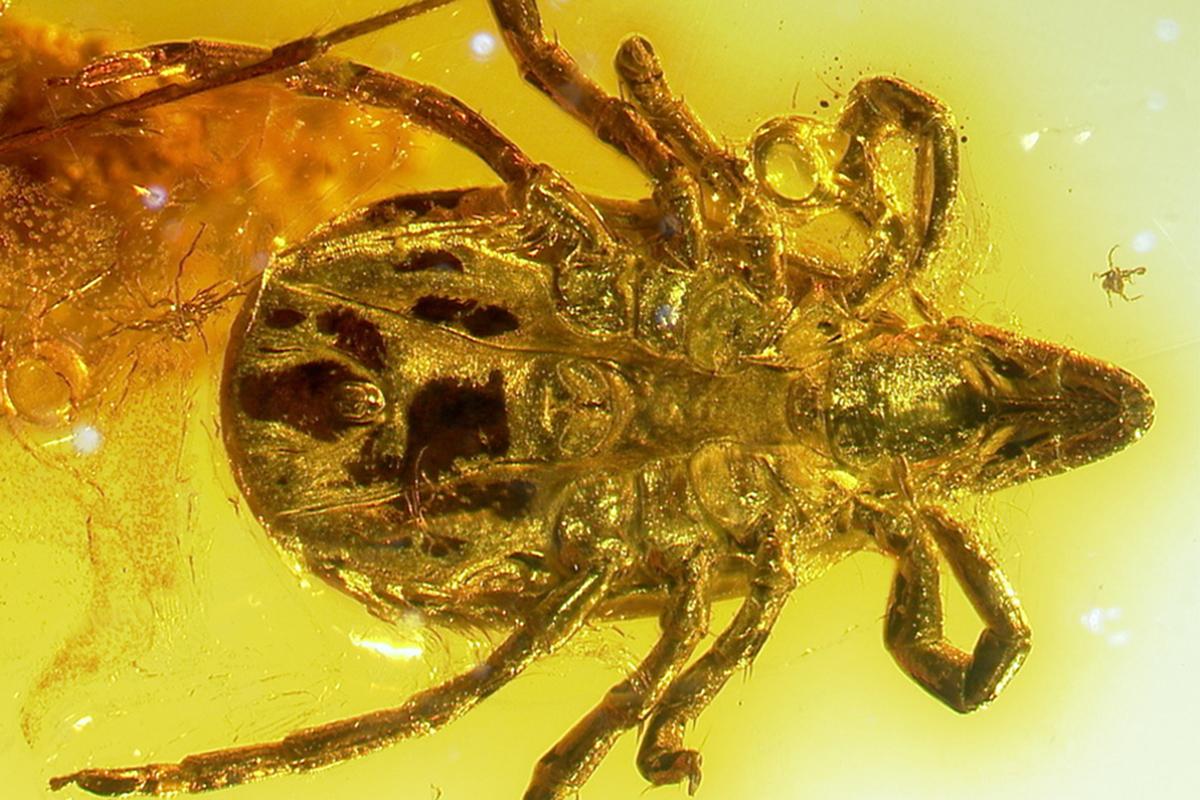A research team led by Jason Dunlop from the Museum für Naturkunde Berlin published in the international journal BMC Evolutionary Biology the results of their study into a ca. 49 million year old tick from Baltic amber. Fossil ticks are very rare and the extinct species Ixodes succineus was originally proposed as a possible ancestor of the modern sheep tick Ixodes ricinus. With the help of computed tomography the researchers produced new, high-quality images of the amber fossil and discovered that the closest living relative of Ixodes succineus is in fact an Asian species: Ixodes ovatus. Today, this animal carries certain diseases and the researchers compared the age of their fossil with the estimated dates for when the agents causing tick-borne diseases may first have evolved. Some of the protozoans or bacteria found today in ticks should have been around 49 million years ago and Ixodes succineus could potentially have transmitted them.
Ticks are well known, although not very popular, arachnids which suck blood and at the same time can transmit infections, such as Lyme disease or spotted fever. Fossils of ticks are extremely rare. Less than a dozen species are known; the oldest going back to the Cretaceous. The ca. 49 million year old (Eocene) Baltic amber preserves a representative of Ixodes, the most diverse genus of hard ticks today. Ixodes succineus was first described in 1964 and the specimen was deposited in the University of Bremen. The original description suggested that Ixodes succineus was very similar to – and thus probably closely related to – the modern sheep tick Ixodes ricinus.
To test this hypothesis an international research team from Germany, the USA and Great Britain led by Jason Dunlop at the Museum für Naturkunde Berlin re-examined the amber fossil with the help of x-ray tomography. This method is increasingly used to study amber fossils and delivers extremely accurate images of the animal’s anatomy which enabled the research team to compare the fossil with living ticks using exactly the same characters that would be used to identify modern species. They could reject the idea that Ixodes succineus is an ancestor of the European sheep tick, and discovered instead that the closest living relative of the fossil is an Asian species: Ixodes ovatus. This suggests that in the Eocene, about 49 million years ago, there were hard ticks in Europe, but that the sheep tick which lives here today is not a direct descendant of the amber species. Ixodes ricinus must have come from a different source, perhaps entering central Europe from the south with mammals after the last ice age?
Like most Ixodes ticks, the living species Ixodes ovatus is known to carry various diseases caused by viruses, bacteria and protozoans. The research team wanted to know whether the closely related amber fossil could also have carried such diseases. This cannot be tested directly, but indirectly we can look at the ‘molecular clock’ and the scientific literature about when the disease-causing agents found in ticks are likely to have evolved. For example, the origins of Lyme disease are probably much younger than the 49 million year old amber fossil. However, for prioplasmids (a group of parasitic protozoans that are only found in ticks) or the Rickettsia virus which causes typhus there is evidence that the pathogens which cause these diseases should have been present back in the Eocene at the time when Ixodes succineus was alive. The amber fossil could plausibly have transmitted such diseases, which opens up interesting questions about whether the evolution of the pathogens is coupled to the disease carrier (i.e. the ticks) or to the hosts on which the ticks feed (i.e. birds and mammals).
Published in: Dunlop, J. A., Apanaskevich D. A., Lehmann, J., Hoffmann, R., Fusseis, F., Ehlke, M. Zachow, S. &. Xiao, X. 2016. Microtomography of the Baltic amber tick Ixodes succineus reveals affinities with the modern Asian disease vector Ixodes ovatus. – BMC Evolutionary Biology 16:203. DOI 10.1186/s12862-016-0777-y
The complete publication available here:
https://bmcevolbiol.biomedcentral.com/articles/10.1186/s12862-016-0777-y
You can find photos and a video provided for download here:
http://download.naturkundemuseum-berlin.de/Presse/Bernsteinzecke/
